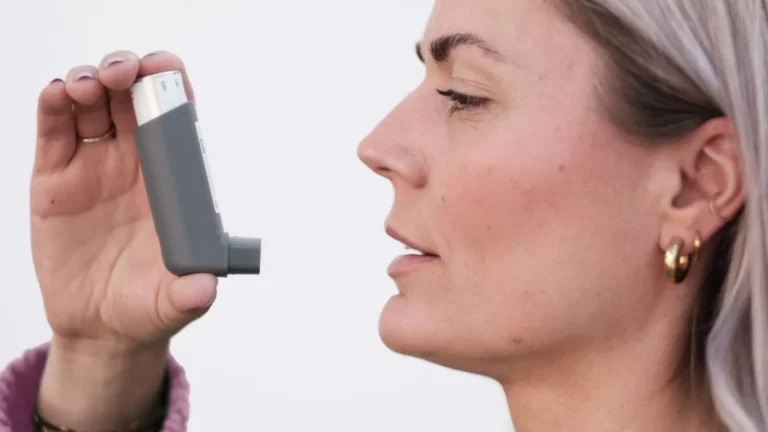Transform Hypertension Naturally: How Yoga Nidra Lowers Blood Pressure Fast
Let’s talk about something close to my heart—literally and professionally: blood pressure. As an Internal Medicine Physician with a focus on hypertension management, I’ve seen patients ride the rollercoaster of numbers, medication changes, and stress-induced spikes. One practice I now consistently recommend—and personally use—is Yoga Nidra. Yep, that effortless-looking deep relaxation technique that somehow works like a physiological reset button. If you’re wondering how Yoga Nidra helps with hypertension, you’re not alone. Most people don’t associate lying on the floor with reduced systolic numbers, but it’s a game-changer. Let me walk you through why this matters more than ever.
Why Hypertension Needs More Than Just Medication

Managing high blood pressure isn’t just about popping pills. Sure, ACE inhibitors, ARBs, beta-blockers—they all have their place. But as I tell my patients, if we don’t address the *why* behind the elevated numbers, we’re just putting a lid on a boiling pot. That’s where lifestyle medicine steps in, and honestly, Yoga Nidra deserves way more attention in this category.
Hypertension, especially the kind triggered or worsened by chronic stress, thrives in a sympathetic-dominant nervous system. Translation: our bodies are stuck in fight-or-flight. Yoga Nidra gently coaxes us back into parasympathetic mode—rest, digest, and yes, *relax*.
What Is Yoga Nidra, Really?

First things first—no, you don’t have to twist into a pretzel. Yoga Nidra, or “yogic sleep,” is a guided meditation that walks you through different stages of consciousness while your body stays completely still. Think of it as nap-adjacent, but with therapeutic benefits backed by neuroscience and clinical data.
Most sessions involve lying down in Savasana (that’s corpse pose, but let’s not focus on the name), listening to a soothing voice guide you through body scans, breath awareness, and visualization. By the end of it, your heart rate slows, your breathing deepens, and your mind goes from chaos to calm.
How Yoga Nidra Helps with Hypertension on a Physiological Level
- Reduces Sympathetic Nervous System Activity: Chronic stress keeps cortisol and adrenaline flowing, which tightens blood vessels and jacks up BP. Yoga Nidra taps into the vagus nerve, helping shift into parasympathetic mode.
- Enhances Baroreceptor Sensitivity: These little pressure sensors in our arteries regulate blood pressure. Studies suggest mindfulness and meditative practices like Yoga Nidra can improve their function.
- Improves Sleep Quality: Sleep and BP are tightly linked. Poor sleep worsens hypertension. A 30-minute Yoga Nidra session can be more restorative than an hour of regular sleep for some folks. I’ve had patients who were skeptical and then texted me the next morning saying, “Doc, I slept like a rock!”
My Clinical Experience: Yoga Nidra in Real Life

I had a patient—let’s call her Linda. Mid-50s, desk job, juggling elder care and teenagers. Her blood pressure was bouncing all over the place despite being on two medications. When I asked her about stress, she laughed and said, “Isn’t that just part of life?” We started incorporating lifestyle changes slowly, but the real breakthrough came when she tried Yoga Nidra three times a week.
Within a month, her systolic dropped by 10 points. That’s significant. More importantly, she reported fewer headaches, better focus, and less anxiety. This wasn’t magic—it was biology responding to intentional stillness.
What You Need to Get Started
- A quiet space—bedroom, living room, even your parked car during lunch break.
- A mat, blanket, or just your bed.
- A good audio guide—I usually recommend ones by experienced teachers like Richard Miller or those available in apps like Insight Timer or YouTube (yes, the free stuff works!).
If you’ve been relying solely on pharmacological solutions for hypertension, adding Yoga Nidra to your routine might feel like coloring outside the lines. But honestly? That’s where the healing begins.
But Wait—Isn’t Yoga Nidra Just… Lying There?

That’s one of the most common things I hear when I first introduce Yoga Nidra to patients dealing with hypertension. And hey, I get it. It *looks* like you’re just lying on a mat doing absolutely nothing. But here’s the catch—beneath that stillness, your body is undergoing a subtle yet profound transformation. It’s almost like a system reboot, only it’s your nervous system we’re talking about.
During Yoga Nidra, the brain cycles through different wavelengths—dropping from the active beta state, down to alpha, and even into theta or delta, depending on the depth of your session. This kind of brain activity doesn’t just relax you—it actively supports cardiovascular health by reducing systemic inflammation and improving autonomic regulation. And yes, I know that sounds clinical, but I’ve literally seen it translate into better blood pressure control in patients who commit to this practice consistently.
Making It Work In Real Life: No Retreat Required

Let’s be real—most of us are not packing our bags for a week-long yoga retreat in the Himalayas. I’m juggling a full-time practice and family life myself. But that’s what makes Yoga Nidra so doable. It doesn’t demand fancy props, memberships, or even a full hour of your day. I often tell my patients: start with 15-20 minutes. That’s it.
One patient of mine, a tech consultant in his 40s, actually started doing Yoga Nidra during his lunch breaks in his car. I kid you not. He called it his “portable therapy.” And the wild part? Within two months, he was able to cut back on one of his antihypertensive meds (after proper monitoring, of course—please don’t DIY your meds, folks). His blood pressure readings became more stable, and he said he felt “more grounded.” That’s a win in my book.
Why Consistency Matters More Than Intensity
You don’t have to become a meditation monk to see benefits. But—and I can’t stress this enough—you do have to show up for it. Like brushing your teeth or taking your meds, the real magic of Yoga Nidra shows up with repetition.
- 3–4 sessions a week is a solid starting goal. Even if they’re short.
- Set a timer or use an app to build a habit loop.
- Try guided sessions with a voice you actually like. (Yes, this matters more than you think. I’ve personally ditched more than a few teachers who sounded like Siri on a sugar crash.)
The reason this practice complements hypertension management so well is because it doesn’t just reduce symptoms temporarily—it helps retrain the stress response system. Over time, your body doesn’t overreact to every email, traffic jam, or minor inconvenience. That steady-state calm? It’s gold for your heart.
Clinical Pearls: What I Tell My Patients About Yoga Nidra

Okay, so you might be thinking, “This sounds great, but I’ve tried meditating before and just ended up making a grocery list in my head.” First of all—same. That’s why I love Yoga Nidra specifically. You don’t need to “clear your mind” or “be in the now” or whatever the usual meditation mantras are. You just lie there, breathe, and listen. The guided part does the heavy lifting for you.
Here’s a snapshot of the advice I usually give in clinic when someone’s curious but skeptical:
- Start small: Even 10 minutes counts. It’s not about duration; it’s about showing up.
- Track your BP: Take a baseline reading before starting a regular practice and compare after a few weeks. Patients love seeing the proof—it’s motivating.
- Pair it with breathwork: Something as simple as 4-7-8 breathing before Yoga Nidra can help shift your nervous system faster.
In terms of credibility, I don’t just recommend this because it’s trendy or sounds peaceful. There’s research backing it. Peer-reviewed studies have shown measurable drops in both systolic and diastolic pressures following consistent Yoga Nidra practice. And no, you don’t have to believe in chakras or light bodies or anything mystical to reap the benefits. It’s physiology—plain and simple, wrapped in a very cozy practice.
So, if you’re already maxed out on meds, or just tired of feeling on-edge, Yoga Nidra might be your overlooked ally. You’ve got nothing to lose—except a few points off your BP reading.
Yoga Nidra as a Long-Term Companion in Hypertension Care

Alright, let’s talk about the long game—because managing hypertension isn’t a sprint. It’s a lifelong dance between your choices, your genes, and yes, your stress levels. And here’s the thing: Yoga Nidra isn’t just a “quick fix” or something you try for a week and forget about. It’s the kind of practice that quietly grows on you, with results that speak loud and clear over time.
I’ve seen patients go from skeptics to full-on advocates, not just because their blood pressure stabilized, but because they started to feel better overall. Fewer palpitations. Less brain fog. Better emotional resilience. And no, it’s not just placebo. When the nervous system is consistently regulated, your entire body operates more efficiently—from hormonal balance to digestion to vascular tone. It all connects.
Integrating Yoga Nidra Into a Comprehensive Hypertension Plan
If you’re serious about lowering blood pressure—or helping someone else do it—Yoga Nidra should be part of a bigger lifestyle puzzle. Here’s how I guide my patients to weave it in, alongside other evidence-based strategies:
- Daily Movement: Even just a brisk walk or some gentle stretching makes a difference.
- Anti-inflammatory diet: Think leafy greens, berries, olive oil, and cutting back on sodium-heavy processed foods.
- Regular BP monitoring: I always recommend home monitors—digital, cuff-style—and checking at consistent times daily.
- Sleep hygiene: Yoga Nidra is powerful here, especially for folks with insomnia or high nighttime cortisol.
- Mind-body practices: Meditation, journaling, or breathwork layered with Yoga Nidra creates a stress-reduction toolkit that’s flexible and personal.
Again, this isn’t about becoming a wellness guru overnight. I usually say, “Start with just one change, stick with it, then layer another.” That sustainable approach actually works—because it’s built on consistency, not perfection.
What the Science Says: Backing It with Evidence

I wouldn’t be recommending Yoga Nidra to my patients if there weren’t solid research behind it. Studies published in reputable journals have shown that regular Yoga Nidra practice can reduce both systolic and diastolic blood pressure, often significantly. One randomized controlled trial showed an average systolic drop of 10 mmHg over three months in the intervention group practicing Yoga Nidra compared to the control group. That’s not just noise—that’s meaningful.
The mechanisms are fairly well understood too. Yoga Nidra increases parasympathetic nervous system tone, improves heart rate variability, and helps reduce cortisol levels. It’s even being looked at for its potential to improve endothelial function and insulin sensitivity—both crucial in the context of metabolic syndrome and vascular health.
If you’re someone who likes to nerd out on medical journals (guilty), you can find these kinds of studies indexed on sites like https://www.ncbi.nlm.nih.gov/. They’re worth a look if you’re curious about the hard data behind the calm voice and body scans.
Personal Reflection: What I’ve Learned Along the Way
I’ll be honest—when I first learned about Yoga Nidra in medical school, it barely registered. It wasn’t until a few years into my practice, after seeing some patients stuck in the endless loop of stress-medication-stress that I really began exploring alternatives. And not just for my patients—for myself, too.
There were weeks in residency when I couldn’t sleep, my heart would race just thinking about rounding the next day, and I felt completely ungrounded. Yoga Nidra gave me something I didn’t even know I needed: a reset point. A space between the noise, where healing could actually begin.
So now when I tell my patients to try it, I’m not just giving out wellness advice—I’m sharing something that’s changed my life, and could very well change theirs too.
References
- National Center for Biotechnology Information (NCBI)
- American Heart Association
- American Gastroenterological Association
- National Center for Complementary and Integrative Health (NCCIH)
Disclaimer
This article is intended for informational purposes only and is not a substitute for professional medical advice, diagnosis, or treatment. Always consult your physician or qualified health provider with any questions you may have regarding a medical condition.

Dr. Gwenna Aazee is a board-certified Internal Medicine Physician with a special focus on hypertension management, chronic disease prevention, and patient education. With years of experience in both clinical practice and medical writing, she’s passionate about turning evidence-based medicine into accessible, actionable advice. Through her work at Healthusias.com, Dr. Aazee empowers readers to take charge of their health with confidence and clarity. Off the clock, she enjoys deep dives into nutrition research, long walks with her rescue pup, and simplifying medical jargon one article at a time.






